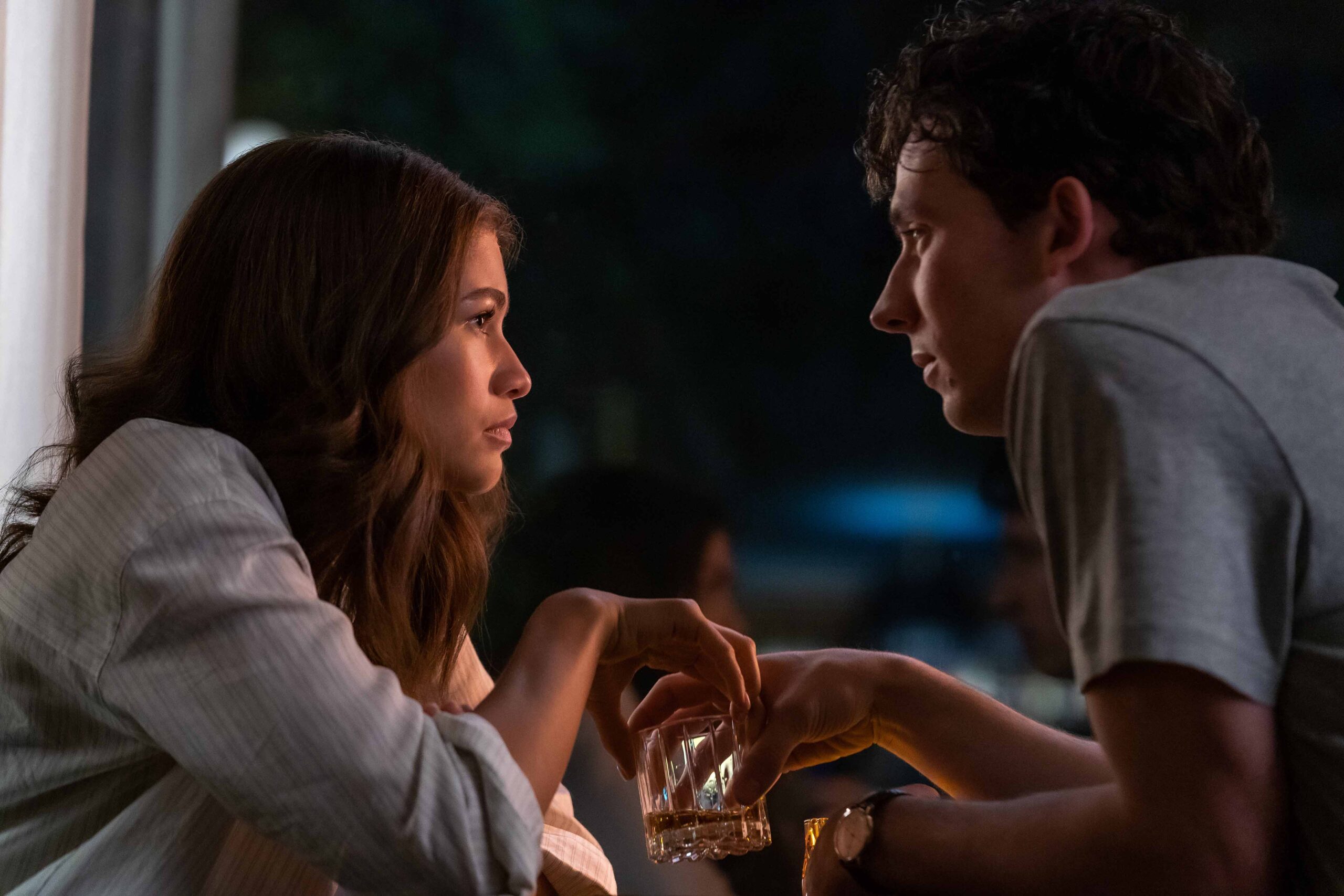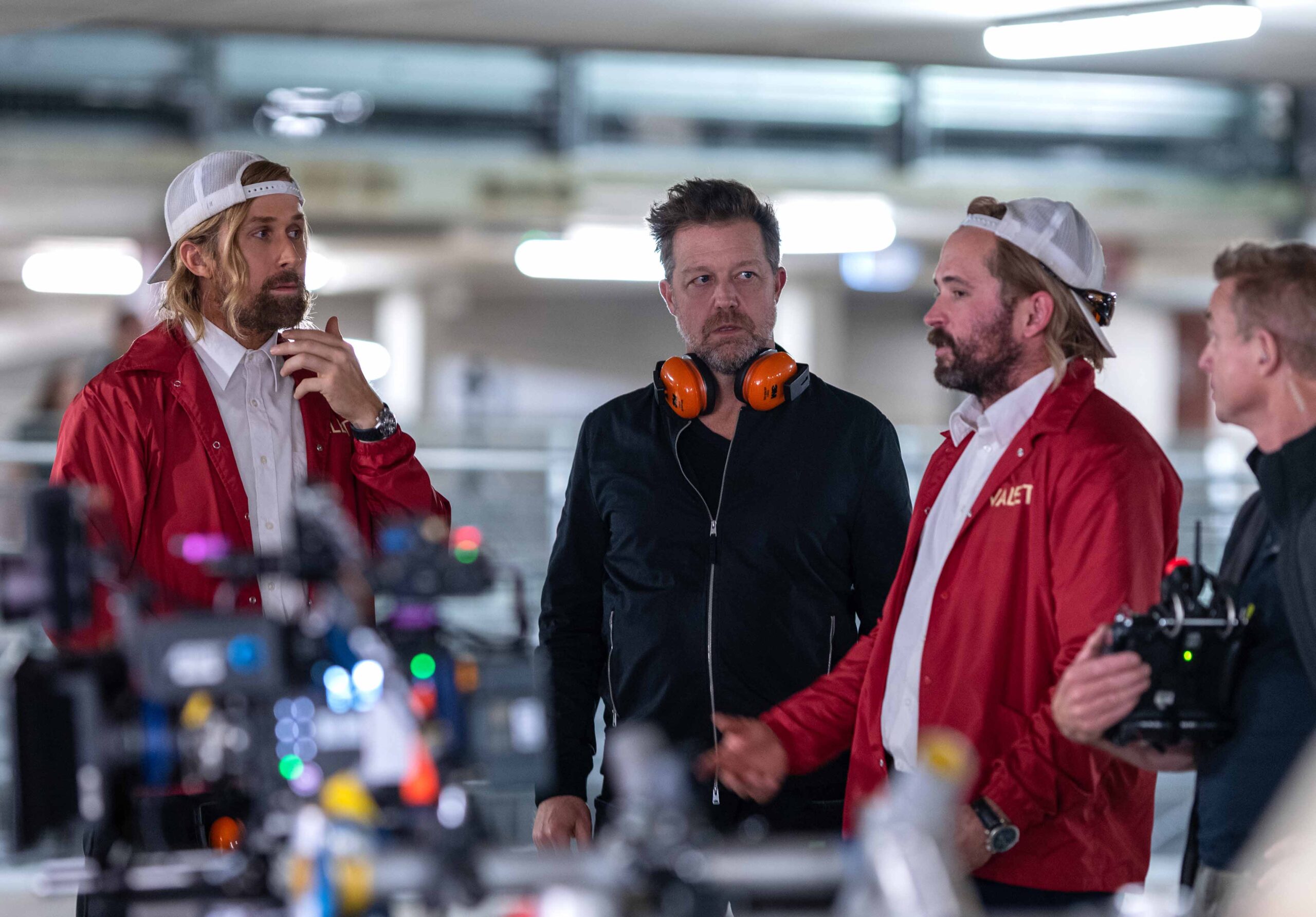With Zendaya leading a stellar trio, director Luca Guadagnino concocts a heady mix of jealousy, ambition, and attraction. It’s terrific.
Akhil Arora, a member of the Film Critics Guild and a Rotten Tomatoes-certified film critic with over eight years of experience

The director of Challengers, the 52-year-old Italian filmmaker Luca Guadagnino, is an ardent student of desire. In all its forms. Guadagnino spent much of his thirties and the first half of his forties with his spiritually connected, self-described Desire trilogy of films—ending with the tender, wondrous and deeply-felt Timothée Chalamet-led Call Me by Your Name. He expanded on the coming-of-age theme with his sensitive and sensual eight-part HBO miniseries We Are Who We Are. It can get weird, too, as it did with the cannibalistic teenagers—Chalamet among them—in the love-amidst-the-horror of Bones and All. But never has Guadagnino’s work been so propulsive, so enticing, and so engrossing before. That is what he accomplishes on Challengers.
Those aspects are partly fuelled by the pulsating, techno score provided by rock n’ rollers turned soundtrack geniuses Trent Reznor and Atticus Ross. The Challengers score entices, cajoles, and guides. Guadagnino uses it liberally—at times, it pops up in the middle of a scene, altering the tone and the tempo. It bounces, creates intrigue, and potentially dictates how you interpret. The on-court tennis action is fervent; made more so by the skilled editing of Marco Costa and the sound design that propels it. In places, the score depicts the inner turmoil of the characters or adds another layer to the emotions. Elsewhere, it cuts out abruptly, leaving you stranded and entirely focused on the silence and the people in it.
How about all that ultra slo-mo?
All of this is taken to the next level with the ultra-slow motion (and the score amplifying it further). Challengers begins in that fashion—I wondered aloud that Zack Snyder would be proud of it—but it’s a fraction of what’s to come in the climax. There, Guadagnino—along with his cinematographer Sayombhu Mukdeeprom and the editor Costa—plays with time to an almost impossible degree. It’s like being in suspended animation. Faces, expressions, and tiny moments are stretched into aeons. Beads of sweat drop like giant spheres onto the ground and then onto us, as the camera turns upward. Dare I say it’s melodramatic—to be fair, that’s baked into the script from debutant Justin Kuritzkes—but the drama feels earned given how the film has proceeded and been handled until that moment.
It’s earned and driven, ultimately, by the actors. The chemistry is superlative and bursting out of the frame. Josh O’Connor’s mischievous smile, Mike Faist’s crumbling façade, and Zendaya’s sheer star power come together to deliver a winning package.
The plot of Challengers: a tennis-fuelled love triangle
Six-time Grand Slam winner Art Donaldson (Faist) is struggling with his confidence as he loses in the first round of a tournament ahead of the US Open, the only Grand Slam he has yet to win in his career. His wife-coach Tashi (Zendaya) enters him into a Challenger event in a bid to regain his confidence by beating lower-ranked opponents. (In pro tennis parlance, Grand Slams are the peak of competition, while Challengers are near the bottom of the pyramid.) To their surprise, when Art makes it to the final, he finds Patrick Zweig (O’Connor) across the net. Patrick is not only Tashi’s ex-boyfriend but also Art’s former best friend and doubles partner. Challengers jumps back and forth across a 13-year period in a nonlinear fashion to sketch out its tennis-fuelled love triangle.
Mild spoilers follow.
Of the three, Tashi is the most talented and the one who has always chased excellence. Having failed to have a career of her own thanks to a knee injury, she has lived vicariously through Art. A lot is going on with Tashi on the surface, much of which is visible on Zendaya’s face. Off the court, she’s pulled between the two boys (and later, men) in ways that confound and ways that make sense. But a lot is going on beneath the surface too, close to boiling over at times.
Ever since her teenage years, Tashi has been concerned about being a “homewrecker”. The home, in this case, is the close friendship of Art and Patrick who came of age at a tennis academy. As both are pulled towards the same woman, she does end up coming between the two though that’s a reductionist version of what really goes down.

Zendaya is fully in command
Tashi enjoys the control she has over them. In one of their first-ever meetings, she cleverly gets them to open up about their lives and lay bare the apparent homoerotic tension. It’s part of possibly the best scene in Challengers. Tashi—and by extension, Zendaya—is fully in command as she keeps Art and Patrick guessing who she will pick between the two while they compete for her attention. Patrick is the more eager one and Art is more willing to participate. It’s steamy, it’s comedic, and yet delicate. The layer of homoeroticism runs through the film. In the hands of Guadagnino, it’s pushed further in obvious ways (like the kissing threesome) or with smaller touches (like repeatedly showcasing the proximity between Art and Patrick).
While Patrick is the more egoistic and self-confident of the two boys and believes in his own superiority, Art has always been under Tashi’s charm. For instance, whenever she asks him if he loves her, he simply says “Who couldn’t be?” He’s in awe of her and he can’t find who he is. Tashi has dictated what he does, and Art has lost himself in some way by giving in to her. Early on, when Tashi asks—or rather, says—that he should skip the Cincinnati Open and play a Challenger instead, Art effectively says, “You know best.” A week later, he concedes he’s tired and wants to retire soon. It’s clear that Art has played more for Tashi than for himself. Art may have never pushed himself to multiple Grand Slams. And it’s not his confidence that’s gone—it’s his drive.
Tashi is drawn to ambition. That’s why she readily admits she will leave Art if he fails to beat Patrick in the Challenger final. At the same time, Patrick’s inability to make something of himself frustrates her on some level, even if she won’t show it. She’s drawn to his roughness and the fact that he willingly accepts who he is, warts and all. But for all the desire to live his way and not take anything else into account, Patrick has thrown the promise down the drain. He’s so wedded to the idea of who he is that he cannot see another way. The fact that Art allowed himself to be moulded by Tashi gave him success. Patrick must be jealous of it all—the multiple Grand Slams, the rich lifestyle, and their daughter (who exists on the margins)—even if he never shows it.

In Challengers, everyone is bitter
Early into Challengers, Tashi notes that she doesn’t want hitting a ball with a racquet to be her only skill in life. But several years later, Tashi acknowledges that hitting a ball with a racquet is perhaps her only skill in life. That is why tennis is an obsession for her—why it pushes her but also drives her to the edge. That single-minded focus defines how Tashi lives her life and how she sees the people around her. Even her injury doesn’t change that. So, when she’s unable to derive happiness by being on the court herself, she juices it by being in the orbit of other champions. Art’s success is hers but so is his failure. That eats away at her, which in turn adds to the bitterness that runs across the movie. Art, Tashi, and Patrick are pulled towards each other but also can’t stand one another.
Guadagnino uses that to great effect on Challengers. He weaves through scenes with gleeful, child-like energy. The strands between the trio are pulled until they are taut. There’s joy in their pain and catharsis in their punishment. He makes sure that you feel every whack of the ball. (The VFX tennis balls are distracting—their existence is made obvious with the ball flying into the camera over and over. The balls also don’t slow down and behave like a real tennis ball.) He amps up the drama by turning the camera into the ball and filming from impossible angles.
In what is easily his lightest and most accessible film yet, Guadagnino takes primal human emotions—attraction, jealousy, failure, betrayal, despair, and sacrifice—and turns them into something endlessly fascinating. Game, set, match. Applause.
Challengers is now playing in cinemas worldwide. It released on April 18 in Australia and New Zealand, April 26 in the US, the UK, Canada, India, and Ireland, and May 1 in Singapore.
- Every Indian Netflix original movie, ranked – October 25, 2024
- The opening night of the 2024 MAMI Mumbai Film Festival was a joke – October 19, 2024
- Agatha All Along episode 5: what time is it out? – October 9, 2024




What do you think?